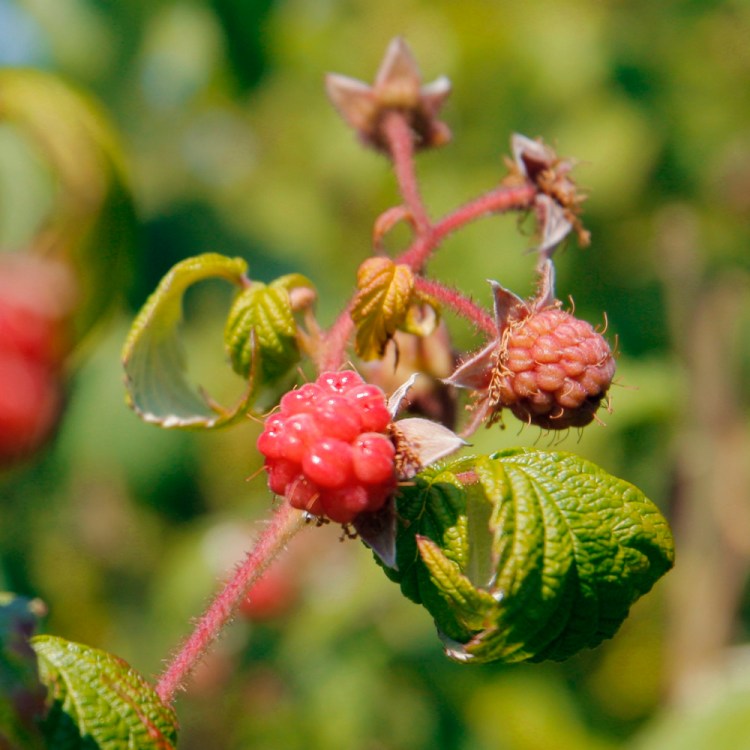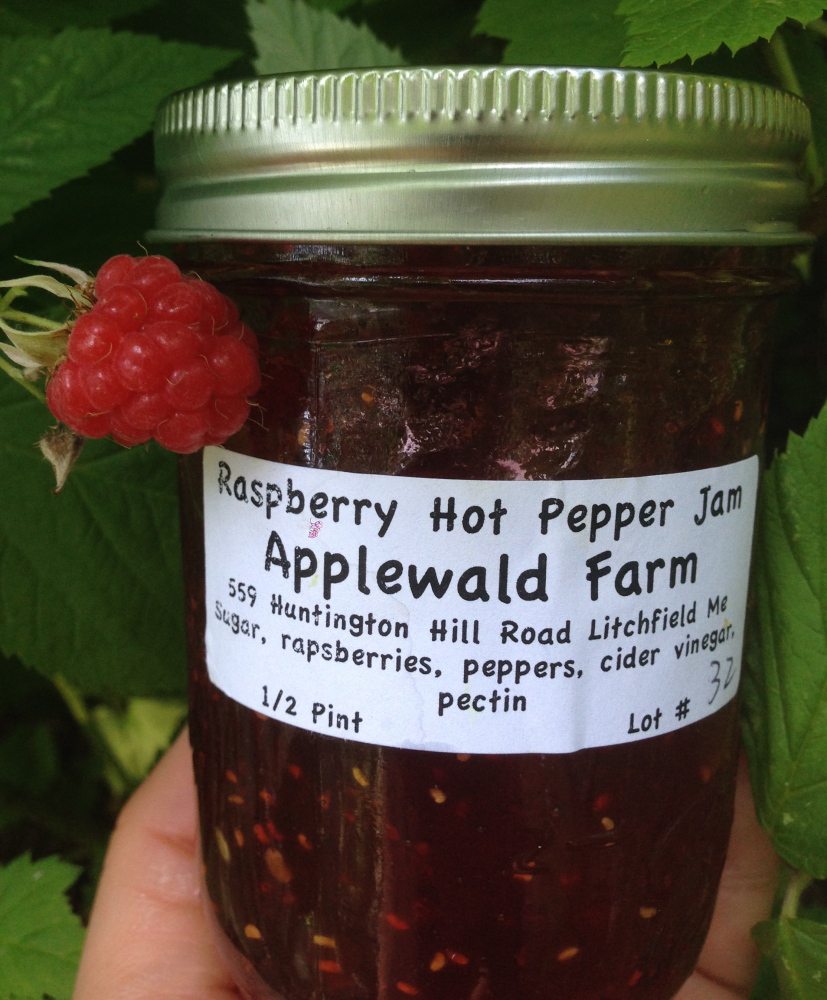“Maine is not Oregon,” veteran farmer, writer and former U.S. Senate candidate Jean Hay Bright stressed when I emailed to ask about her raspberry and black raspberry crop at the small BrightBerry Farm she and her husband tend near Bangor in Dixmont. “Cane fruit doesn’t grow tall, lush and wild in Maine like it does in Oregon and Washington (we have kids who live out there, so we know).”
In my family, we’re well aware of this painful truth. Those voluptuous berries – not to mention untold varieties of pears, plums and cherries – are one of the things we miss most about our four years in the abundant Willamette Valley, where we lived through the summer of 2012.
It isn’t just raspberries and the staining jet, fall-apart “black caps” I miss. We also long for the meaty marionberries, the jammy tayberries (a raspberry-blackberry cross) and even the invasive and thereby prolific, seedy Himalayan blackberries, bane to Oregon gardeners though they are. We relished – and devoured – them all.
Fortunately, the Brunswick house we bought last summer came with an established backyard raspberry moat. A month after moving in, we enjoyed a sizable harvest, despite the Japanese beetles’ efforts to get at the berries – or at least their leaves – before we could. My toddler son Theo loved foraging for the magenta fruit. Getting scratched up in the process didn’t phase him. We ate several backyard pints raw, over cereal, yogurt and ice cream. We took our cues from my sweet-tooth Poppy, who loved fresh raspberries bathing in cream or whole milk, with a sprinkle of sugar atop.
Our raspberries produce teeming green leaves (which make a uterine tonic tea for pregnant and nursing moms, and the PMS-afflicted), though the leaf-to-berry ratio is a little skewed. Fortunately, even if the Japanese beetles (which we try to drown in buckets of soapy water) make lace of the leaves, the berries seem to still survive and ripen. The bigger scourge of late is that ominous-sounding fruit fly, the spotted wing drosophila, which is gaining a foothold in Maine.
To ward off this late-summer pest, farmer Ben Whatley in Topsham said he planted a new crop of early-ripening raspberry varieties that fruit before the invasive Asian fly descends. Ever-bearing or fall-bearing raspberries (like those champagne-colored, less tart ones) tend to produce two crops, so at least the first one can be picked in time, said Sarah Wolpow of SweetFern Garden Design in Brunswick.
Maine’s harsh winters tax our cane berries, and then there’s the issue of soil quality and soil pH. Hay Bright said the berry soil is naturally richer in the Pacific Northwest. Also, while raspberries do like a slightly acidic soil (5.6-6.2 pH), our soil, at least in my Brunswick neighborhood, tends to be more acidic than that, Wolpow said. You can make the soil more basic with limestone.
Painter David Chadwick told me he always throws Epsom salts around his mother’s mature raspberry patch in Bath (transplanted years ago from a relative’s in Wilton) by spring’s bud burst. Chadwick’s mother swears the magnesium sulfate helps the berries take off.
Beyond raw consumption, I aim to use this year’s crop, supplemented with berries from local farms, with a bit more intention. I’ll drizzle hot vanilla-infused brown butter over raspberries, topped with a pinch of raw sugar (and maybe sea salt), which Amanda Hesser of Food52.com says invokes raspberry pie, minus the crust. I also swoon for the raspberry vinegar (a shrub syrup for elixirs) that Hesser resurrected from a 1900 New York Times.
And I’ll freeze raspberries to bake alongside pears (much less ubiquitous in Maine than Oregon) from Willow Pond Farm in Sabattus (the orchard grows raspberries, too!) for the standout Gingered Pear and Raspberry Pandowdy on the cover of the “Rustic Fruit Desserts” cookbook, penned in the other Portland.
My mother, a former French teacher who encouraged our love of tarte aux framboises, never cooks her favorite berry, which falls apart with heat. The raspberry jam-making tradition comes from my paternal side, though I’ve never canned it myself at home before – this summer will be a first. My late Grandma Winnie McCandlish made raspberry jam every summer in Belgrade Lakes, with fruit from her neighbor’s roadside stands.
Oregon put versatile Pomona’s Universal Pectin, featured in the recipe here, on my radar. My Master Food Preserver classmate Sara Power’s Jamming for the Hungry program used this pectin in the diabetic-friendly condiments volunteers canned with gleaned fruit and donated to food banks. In fact, organic berry farmers in Washington state created Pomona’s in 1980, craving a less cloying way to put up the harvest (calcium water rather than sugar makes this citrus pectin gel).
I also feel less pressure this year to can only when the fruit is fresh. BrightBerry Farm freezes just-picked raspberries on trays, to be bagged in freezer bags “loose like a bag of marbles” to take out a few at a time. “The best way to sell raspberries is frozen,” says Hay Bright, who is rebuilding her tiny crop this year; all her frozen black raspberries, a rare commodity, go to John’s Ice Cream in Liberty.
Frozen berries mean we don’t have to squander a hot, fleeting summer day canning jam. We can wait ’til things cool – and the guests stop descending – come fall, and combine non-concurrent fruits like blueberries and rhubarb and strawberries and peaches then. Now if only my husband Dan would let me have a chest freezer to stockpile.
Send questions/comments to the editors.



